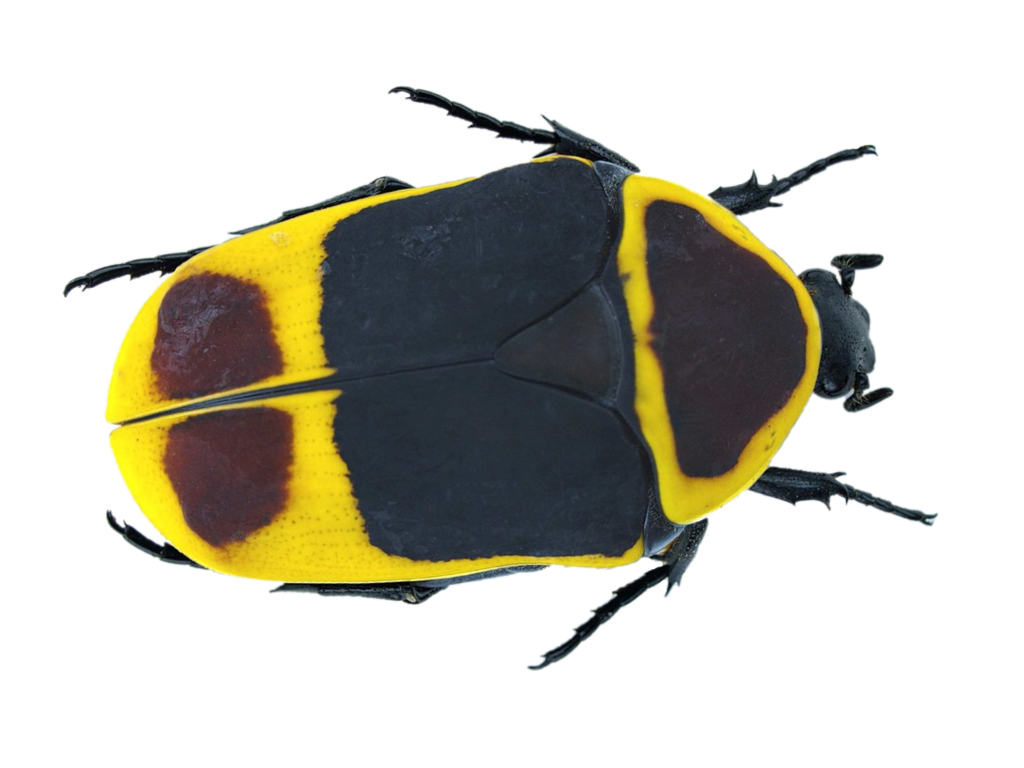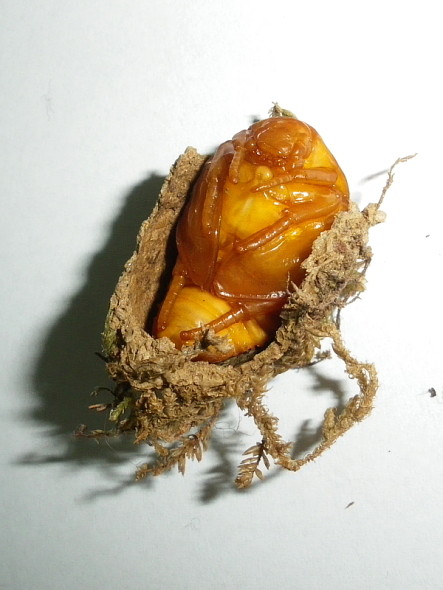Sun beetle
Pachnoda marginata

Unique style of flying
The sun beetle belongs to the Coleoptera, or beetle order, and inhabits tropical climates in forested areas, both on the ground and in shrubs and trees. It is active during the day and likes to bask in the sun. The sun beetle can fly and it often spins several times around its own axis as it flies from shrubs or trees to the ground. It also makes a variety of loud sounds.
All insects have a body divided into three parts - a head, thorax and abdomen. Here you can see the sun beetle's head.
Photo: guppiecat-CC-BY-NC-ND
The shell on the beetle's back is called elytra, and is a form of hardened wings. Under them are the thin hindwings the insect uses to fly. Here the sun beetle's hindwings are unfolded.
Photo: Dragus-CC-BY-SA
Sun beetles are popular in terrariums due to their beauty and fairly easy care, making them a common choice among hobbyists.
Photo: Greg-Hume-Greg5030-CC-BY-SA
Enjoys fallen fruit
After mating, the female sun beetle lays 20–40 eggs in moist soil. The larvae that hatch feed on decaying plant matter and fallen fruit. When the larvae have grown to over 3 cm in length, they enclose themselves in a cocoon of soil and faeces, pupate, and after several weeks become a fully developed beetle.
The sun beetle is one of the most popular beetles to keep in a terrarium.

Photo: Xero-CC-BY-SA
Distribution worldwide
West and Central Africa.

Threat based on the Red List

Trade regulations
CITES: Not listed.